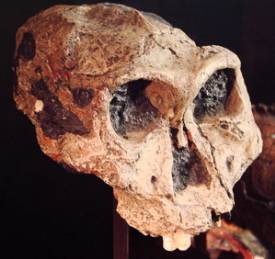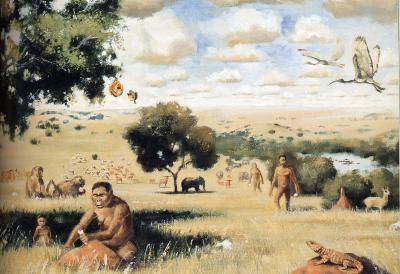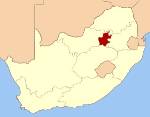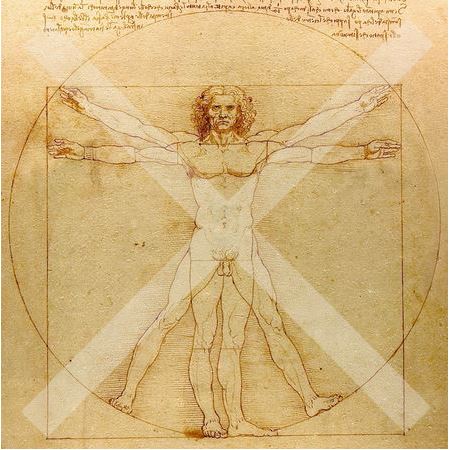Paranthropus robustus
Online Biology Dictionary
|
|
EUGENE M. MCCARTHY, PHD GENETICS

|
|
Paranthropus robustus Photo: Guérin Nicolas |

|
|
P. robustus Painter: Walter Voigt |

|
|
Location of Gauteng Credit: Htonl |

|
|
Location of South Africa Credit: Vardion |
The first traces of this hominid to come to light were some teeth discovered in 1938, by a schoolboy, Gert Terblanche, at Kromdraai, a breccia-filled cave northwest of Johannesburg, in Gauteng, South Africa (see map below right). He showed his finds to paleontologist Robert Broom of the Transvaal Museum, who promptly investigated the site. The same year he described and named Paranthropus robustus (1938).
Over the next decade, Broom further excavated the Kromdraai site, and adjacent ones at Swartkrans and Sterkfontein caves, turning up much additional material now attributed to this hominid. Specimens recovered to date range from 1.2 to 2.3 mya in age.
Broom chose the name robustus in reference to the stout chewing apparatus of this creature — a sturdy jaw and teeth, together with a prominent sagittal crest atop the skull providing a large anchoring area for big jaw muscles.
Brain size in P. robustus ranges from 410 to 530 cc, a bit larger than the typical chimpanzee's. Paranthropus robustus was the first of the robust Paranthropus australopithecines to be found (the other two robust australopithecines are Paranthropus aethiopicus and Paranthropus boisei).
The Kromdraai fossils included teeth and portions of a skull that dated to 2.0 mya. P. robustus has thus far been found only in Drimolen, Kromdraai, Swartkrans, Gondolin, and Cooper's caves, all in South Africa. The remains of at least 130 individuals have been found at Swartkrans.
Dated to 2.3 mya, the recently discovered Eurydice skull found at Drimolen Cave is the oldest P. robustus specimen known.
P. robustus existed at a time when stone tools were being made, but it is uncertain that hominids of this type either manufactured or used them. Although the robust australopithecines had larger brains than their gracile counterparts, most experts think early members of the genus Homo were the actual toolmakers.
Perhaps we are not from the apes alone?

|
Facts about Paranthropus robustusHabitat: Open woodland. Synonym: Australopithecus robustus. Pronunciation: pair-RAN-thrəp-pəs or (PAIR-an-THRŌPE-pəs) rō-BUST-əs. Etymology: The Greek suffix -anthropus was added to the Greek prefix par- to construct paranthropus, meaning "near man"; the Latin word robustus means "strong" or "powerful". |
Interesting facts about other members of genus Homo:
Australopithecus bahrelghazali >>